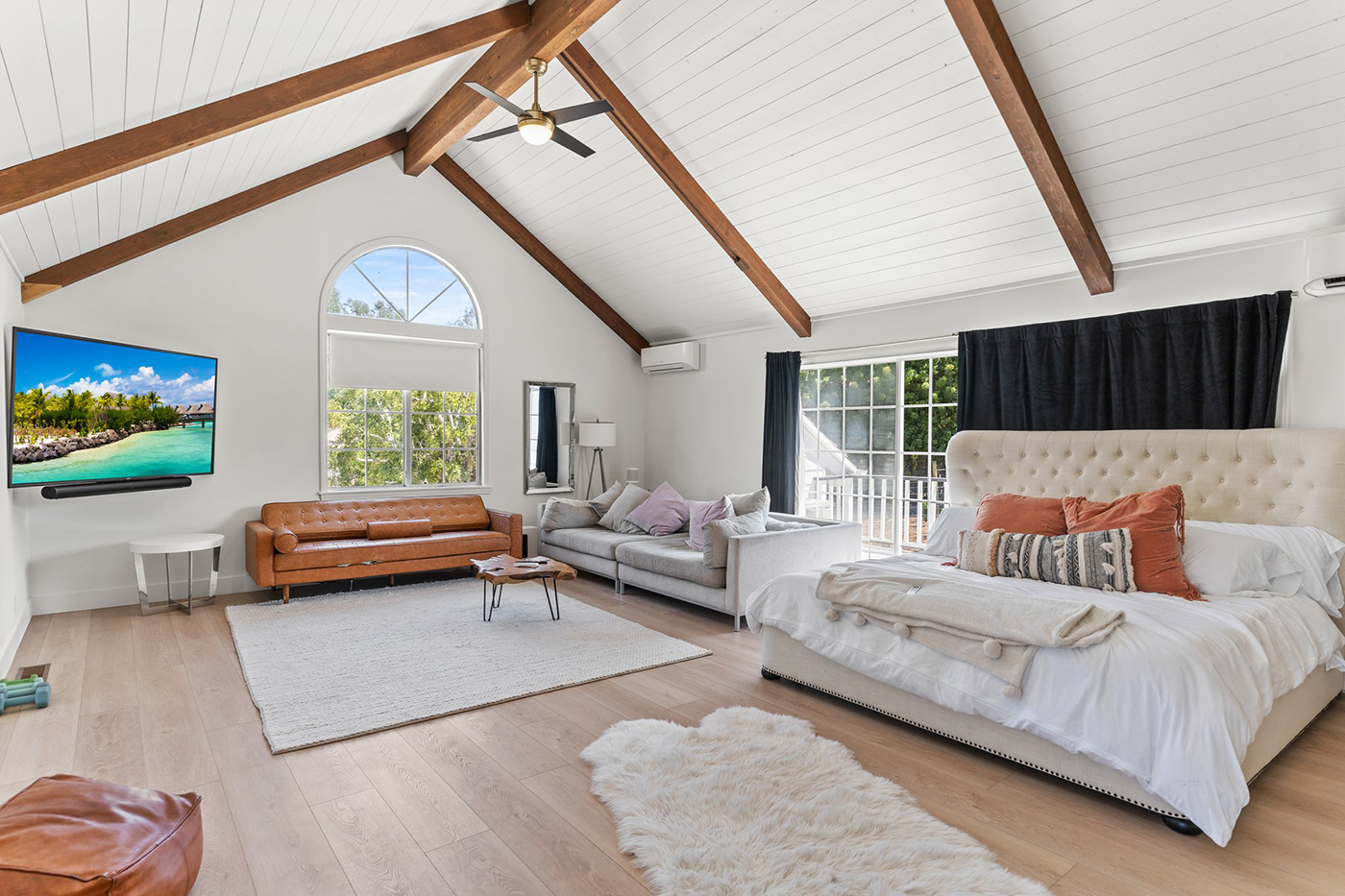Inspiring Ideas to Create Additional Rooms

Summary
Creating an additional room in your home is one of the best ways to increase the value of your property and enhance its functionality and comfort. However, before doing anything, you must assess your space and understand your needs.
By assessing your space and needs, you understand the amount of space you have, how to maximize it, and your budget for the project effectively. After this, you can check out popular room addition ideas and draw a plan that suits your taste, style, needs, and budget.
You can choose from several innovative room addition ideas, including loft conversion, garage conversion, basement renovation, bump-out addition, and modular additions.
While some additions involve renovating or remodeling existing structures, others, like modular and bump-out additions, involve construction in new spaces. When planning a room addition, a professional should assess your property, determine your budget, choose a design and layout, and obtain the necessary permits for the project.
Table of Contents
Importance of Creating Additional Rooms
There are many reasons to add additional rooms to your home. Still, the most compelling is that it boosts property value and creates much-needed space for expansion and renovation projects like bathroom renovations, kitchen extensions, guest houses, playrooms, and more.
A room addition project can take two forms. You can convert or remodel existing rooms to fit your needs or use space outside your home to build a detached room. Regardless of your choice, you will need a reputable design build and remodel company like House to Home to make your vision a reality.
In this article, we assess what you need to create additional rooms in your home, popular room addition ideas, and why you need professional input in the project. If you’re considering building a home addition and don’t know what it entails, you’re at the right place to learn.
Let’s begin.
Assessing Your Space and Needs
A space and needs assessment help ensure that you have enough space for your project and, if you don’t, where the required space can be gotten. The assessment follows these considerations:
1. Space Constraints
The most important aspect of building an additional room is understanding how much space you need and how much is available. This understanding helps you plan and draw out an effective plan to maximize the available space. It also influences your choice of layout and design.
2. Purpose and Function
Answering the question, “What purpose does the room serve?” is another important consideration when building an additional room. Knowing the purpose of the room helps you determine how to maximize lighting, the best materials to use, the layout, and more.
For instance, if the new space accommodates a home theater, some considerations that come to mind are the spacing, lighting, ease of movement, etc. Meanwhile, if you’re building another bedroom, you will consider how to maximize ventilation, lighting, privacy, and more.
Popular Room Addition Ideas
If you want to add a room to your home but don’t know how to address the issue, here are some popular ideas that combine functionality with value:
1. Creating a Dedicated Workspace
Suppose you need a dedicated place to keep sensitive documents and other work-related purposes. In that case, you can easily repurpose another room, like an attic or garage, to fit your needs.
The new space can be designed to help you maximize creativity, productivity, and also ensure the safety of work materials. Some added benefits include:
- It helps you save money from renting space outside your home or building a new office.
- The new room improves the functionality of your home and also potentially increases the value of your property.
2. Providing a Comfortable Space for Visitors
If your home is not built to accommodate visitors, you will eventually need to create a proper room where they can rest from their travels. Fortunately, this addition is relatively cheaper than home addition options.
The new space may include a mini-bathroom and toilet, privacy walls, a bedroom, and other things needed for a comfortable stay. The good news is that the extra room can be rented out if you don’t have people visiting.
When planning this room, prioritize creating a warm and inviting atmosphere for your visitors. Consider using natural lighting and ventilation and adding privacy features.
3. A Safe and Fun Area for Children
You can support your children’s growth by giving them a place that encourages imagination, creativity, and exploration. Such a place would be tamper-proof and designed according to age.
Some popular room addition ideas for children-friendly layouts are a playroom, a game room, a library, and a home classroom.
4. Convenient and Private Fitness Space
A home gym or fitness studio is another way to maximize your home’s functionality and value. Some benefits of adopting this idea are convenience, privacy, and increased property value.
However, you should consider space constraints and layouts for equipment, storage, and movement when planning this addition.
5. A Relaxing Space with Natural Light
Another idea for a home addition is a space where you can relax and shut out the outside world. To most homeowners, this means a library, conservatory, meditation room, or an indoor garden.
Regardless of the layout you go with, here are some things you should consid
- Position the room to maximize natural light exposure
- Incorporate comfort features such as a plush cushion, soft textiles, and calming colors.
- Add plants or flowers to enhance your connection to nature and engender a calming effect on the room.
- Use lighting control technology like shading devices or smart glass for adjustable light levels.
6. Accommodation for Extended Family Members
This provides a comfortable and private space for visiting guests and loved ones. You can also monetize the space by renting it out.
Some considerations for planning a home addition for extended family members include:
- Access the available space and layout needed for a functional and comfortable area.
- For more comfort, incorporate privacy features like separate entrances, soundproofing, or dividing walls.
- Consider adding amenities to make the room functional and more comfortable for your guests.
Some famous examples are in-law suites, guest houses, or accessory dwelling units.
Innovative Room Addition Ideas
If you want to maximize the comfort and property’s value, here are some ideas you should consider:
1. Loft Conversion
This conversion involves remodeling an existing attic or loft into a functional and livable space in your home. The process typically involves:
- Assessing the loft’s structural integrity
- Obtaining the necessary permits
- Insulating and ventilating the space
- Adding lighting, walls, ceilings
- Interior design elements
2. Garage Conversion
Like your attic or loft, your garage is an existing space that could be turned into a functional and livable space in your home. You must obtain a professional’s assessment of the structure and planning permits to convert your garage.
3. Basement Renovation
To make your basement livable, you have to consider such things as:
- Waterproofing and insulation
- Upgrading lighting and electrical systems
- Improving ventilation and air circulation
- Installing new floors and walls.
4. Bump-Out Addition
A bump-out addition is a home extension that protrudes from the existing wall line to create a bum-like shape.
The benefits include:
- Creates more space in a room
- Increases functionality
- Enhances access to natural light and ventilation
- Increased living space
- Increased property value.
5. Modular Additions
Modular additions are home structures created offsite and transported to the site. They are then assembled and connected to the existing structure.
These additions are environmentally friendly, quick to install, and can be easily reconfigured or relocated. However, they are relatively more expensive than other home addition options.
Planning Your Room Addition
When planning to create an additional room, you must ensure that you have all your bases covered to prevent costly problems during execution or at the end of the project. The following are some steps to observe when planning a room addition:
1. Define Your Goals
The first step to planning a room addition is to define your goals. This includes setting the purpose of the room, setting a preliminary budget, having a start date and an end date, and more.
2. Assess Your Property
The next step is to get a structural engineer or architect to assess the structure’s integrity and determine whether your plan can proceed without putting your home in danger.
3. Determine Your Budget
After assessing your property, you should know how much it will take to start and complete the project. Set a budget and try as much as possible to stick to it.
4. Choose a Design and Layout
The next step is to choose a design and layout for the room you’re creating. Your design and layout must fit the budget and the purpose of the room.
5. Obtain Necessary Permits
Most states have regulations on the type of construction or additions you can make to existing homes. Do some research on how to get the necessary permits and ensure you’re not disregarding any building codes.
6. Hire Professionals
Find a reputable contractor or construction company to handle your project. Ensure they have experience creating additional rooms. If you live in San Diego, House to Home home addition contractors are the local experts in home additions.
Importance of Hiring Experienced Room Addition Contractors
1. Quality Workmanship
You should hire experienced contractors to prevent shoddy and substandard work. These contractors usually have sterling reputations and evidence of excellent work.
2. Design Expertise
Experienced contractors have been there, done that, and picked up other skills. They can tell which designs fit your room and also give valuable insights that’ll improve the end product.
3. Project Management
Experienced contractors are the best supervisors you need on-site. Their years of experience means they have more control and can work twice as fast as DIYers.
4. Cost Control
Experienced contractors help you set a realistic budget and ensure that you do not exceed the set cost and budgeting parameters.
5. Permitting and Inspections
Experienced contractors can effectively handle the necessary permits and inspections, ensuring compliance with regulations and all safety codes.
Conclusion
In conclusion, planning a room addition requires careful consideration of several factors, including assessing your space and needs, incorporating popular ideas, and picking a plan or layout that fits your purpose.
You will also need reputable construction companies like House to Home to provide expert advice concerning budgeting, permits and inspections, and design. If you are in San Diego and need assistance creating a home addition, contact us at House to Home for speedy and affordable home solutions.
Frequently Asked Questions
Yes, you can add more rooms to your house, but you must ensure you have a plan and permission to do so.
The most affordable type of room addition is converting existing spaces, such as attics, basements, garages, etc., into functional and livable spaces.
A bump-out addition builds out a section of a room by expanding the wall to create an additional space.
Yes, you need planning permission and permits to add an extra bedroom to your home.
The room that adds the most value to a house is the kitchen.
About Author

Founder & Chief Sales Officer, House to Home
John Hayes is the Founder and Chief Sales Officer of House to Home Design Build Remodel, a leading general contracting firm serving homeowners across North County San Diego.
